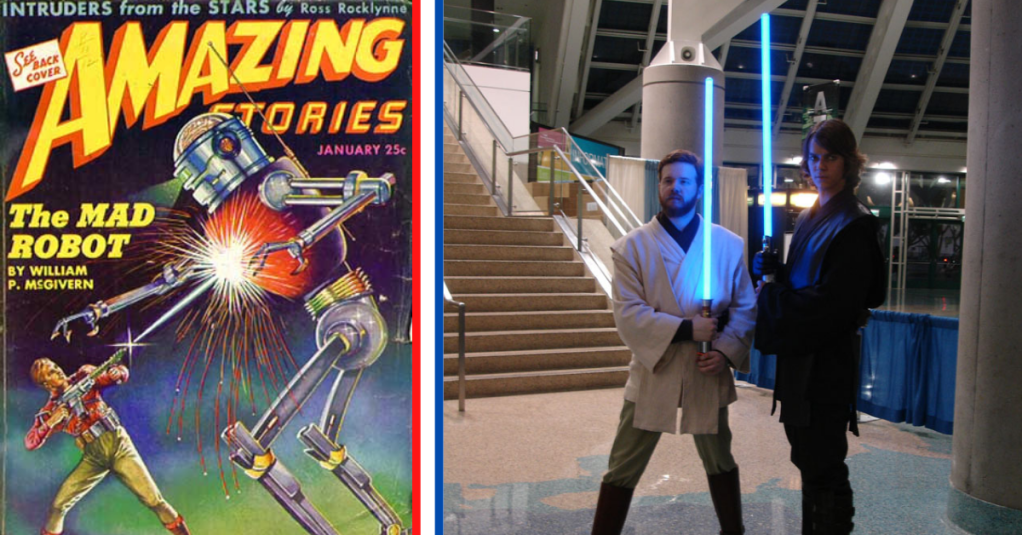We all love sci-fi weapons, right? The allure of a game-changing rifle that – thanks to science mumbo-jumbo, gives the good guys an advantage – is undeniable. But it’s annoying when directors make the weapons super flashy onscreen in a way that guarantees no soldier or space Marine would actually want to carry one.
Here are four annoying tropes of sci-fi weapons that leave us rolling our eyes
1. Every sci-fi weapon has lights, even stealth vampire rifles
We liked the Underworld series. It was fun, a bit sexy, and action-packed. And it had super werewolves and hybrid werewolves/vampires. But how, exactly, did humans – who have night vision goggles and know how light works – come up with custom rifles that included bright lights on them? And glowing ammo? For their anti-vampire teams?
And this is common across sci-fi weapons. The Judge Dredd Lawgivers have LCD screens. The HALO weapons have a combination of LCD screens or bright lights. And Jedi Knights carry literal lightsabers. Speaking of which…

2. Why do swords always come back?
Look, we know sword fights are fun. We’ve been kids playing with sticks before, too. But the insane way that science fiction always contorts itself into knots to try and make sword and knife fights a thing again is frankly embarrassing.
Dune had the Holtzmann Shield that stopped fast-moving projectiles but not knives, for some reason. (Even if that made sense, why don’t the wearers of Holtzmann Shields just wear a bit of leather armor underneath it, which would stop the slow-moving knife?) Somehow, the monsters of Pacific Rim can shrug off missiles or concentrated cannon fire but are quickly sliced apart by chainlink swords. Maybe the Jaegers can’t get good plasma cannons without falling over, which is weird…
3. Plasma cannons don’t actually have recoil
Plasma cannons are real, typically firing plasma rings. Now, they aren’t immediately military useful. Even Navy-funded researchers are mostly working on energy generation and transmission, not on weapons. But real plasma cannons don’t have significant recoil, and it’s easy to see why.
Recoil is caused by the mass of the bullet pushing back against the rifle when fired, as described in Newton’s Third Law of Motion. But since plasma has extremely small mass compared to metal projectiles, there’s no reason that it should trigger much recoil.
But it happens in most movies where plasma, laser, or other energy weapons are featured, probably because the weapon cycling just looks neat.
4. Also, sci-fi energy weapons should be super fast
We’re big Star Wars fans around here. But can we all agree that it’s nonsense that a world full of energy weapons would have blaster bolts that travel slowly enough to be visible to the human eye? I know it looks good on screen, but the Air Force’s Project MARAUDER, one of the most tantalizing glimpses of weaponized plasma research, hinted at plasma rings that flew over 6,000 miles per second. And lasers travel at literally the speed of light, 186,000 miles per second in a vacuum.

So why are all the plasma and laser weapons in sci-fi movies visible? Sure, it looks neat in a few movies, but we don’t always have to go to this same trope. Guns are exciting in movies, but most of them don’t show the individual bullets in flight.
Still, despite all the griping, expect to find us in the seats for Guardians of the Galaxy Vol. 3 and the new Ahsoka movie, even if we’d rather fly an A-10 against an AT-AT than an X-Wing.


